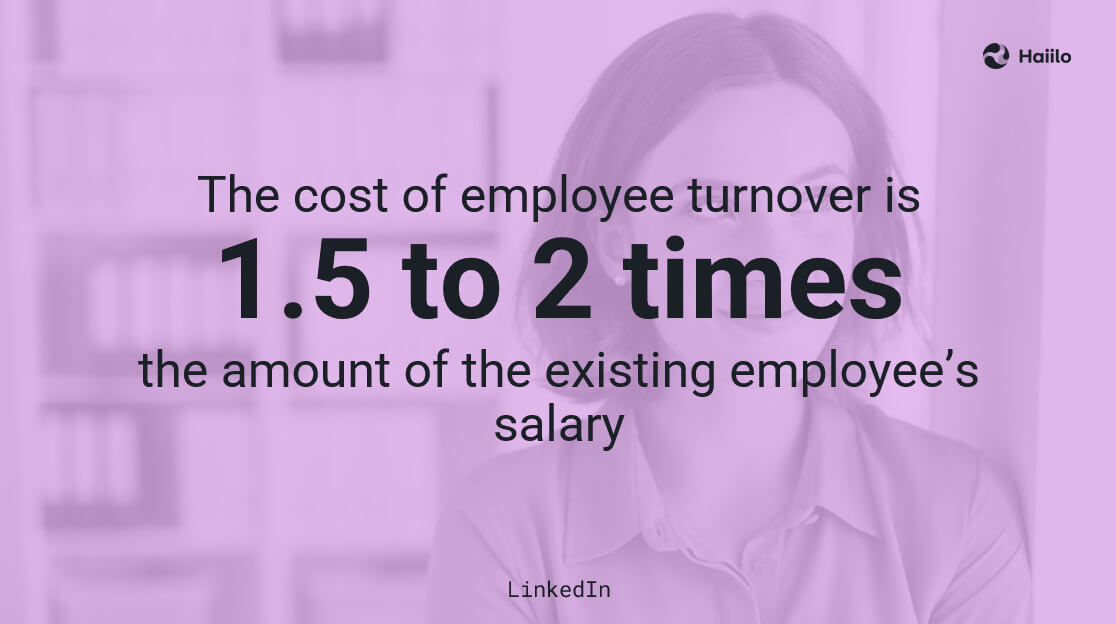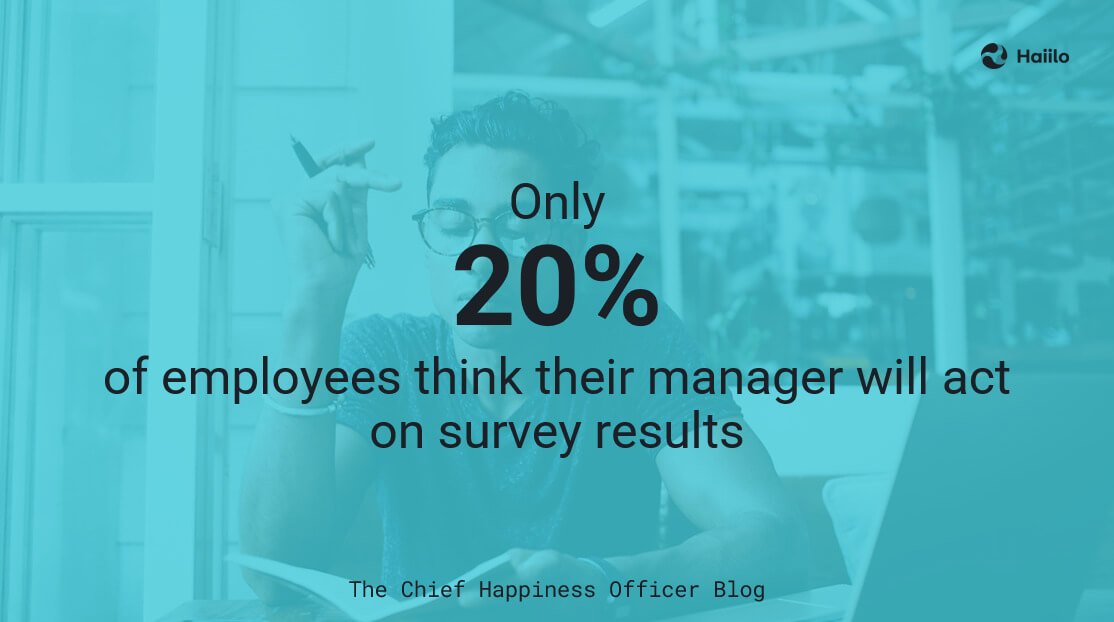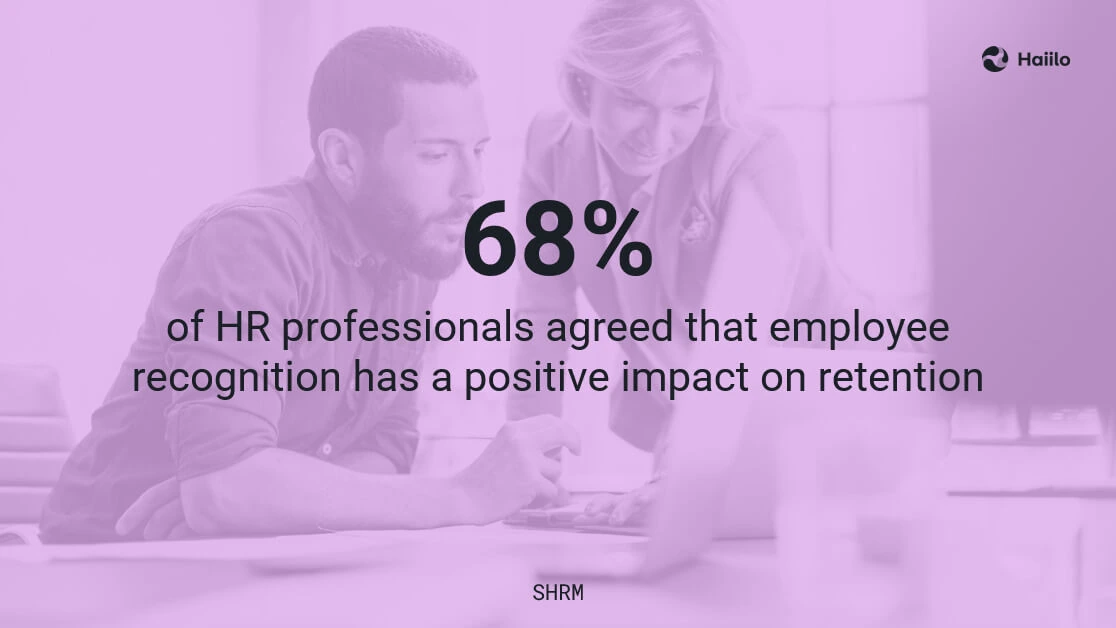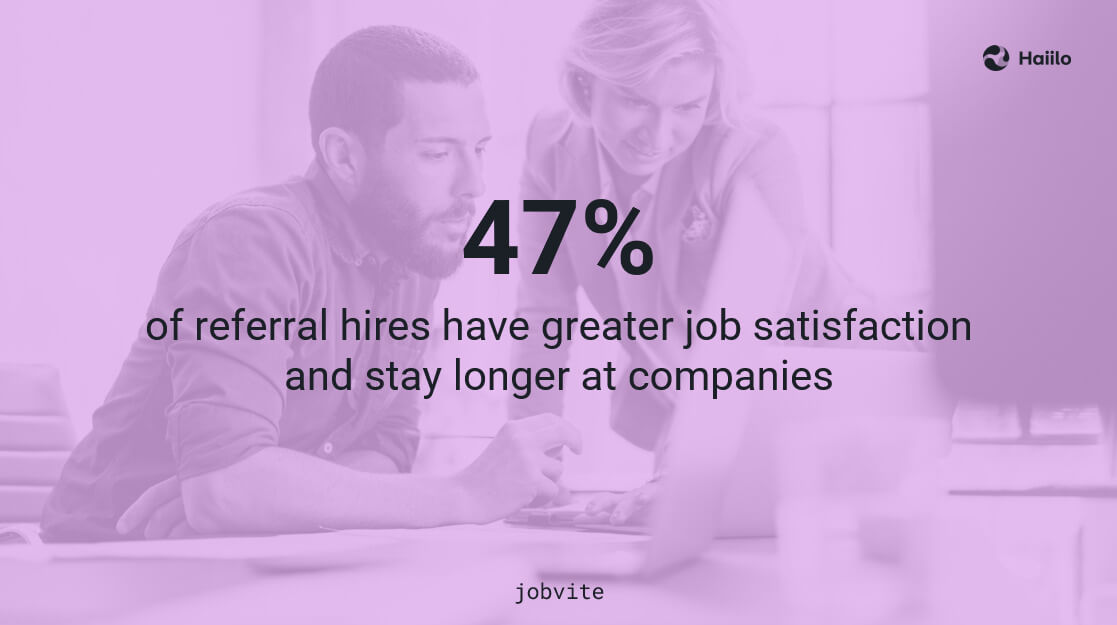How to increase employee retention?
A question every HR and hiring manager would like to have a magic answer to. Yet despite 87% of HR leaders naming employee retention strategies as a top priority in coming years, 20% of them find it difficult to maintain focus on this priority.
However, it’s not that easy. It takes a comprehensive, holistic approach that focuses on improving the overall employee experience in the workplace. The salary alone won’t do it. Career progression opportunities by themselves also won’t do it. Solely a good relationship with a manager won’t be enough.
Employers need to understand the entire employee journey to be able to identify critical areas that impact employee satisfaction, engagement, and, consequently, retention.
Given that the cost of employee turnover is often 1.5 to 2 times the amount of the existing employee’s salary, it is not surprising that everyone wants to find out how to increase employee retention.

Furthermore, there are costs that extend beyond what it takes to advertise the position, train the new hire, and recover lost productivity, and they affect companies’ bottom lines and company culture.
So let’s take a deep dive into how to increase employee retention in your organization even during the era of great resignation.
- 1. Measure the Pulse of Your Workforce
- 2. Pay Attention to Quiet Quitting Behaviors
- 3. Improve Your Internal Communications
- 4. Offer Career Progression Opportunities
- 5. Follow DEI Best Practices
- 6. Build a Culture of Appreciation
- 7. Offer Flexible Work Arrangements
- 8. Ensure Seamless Employee Onboarding
- 9. Implement a Well-being Program
- 10. Consider Social Recruiting
- 11. Don’t Forget About Comp and Benefits
- 12. Invest In the Right Workplace Technology
1. Measure the Pulse of Your Workforce
The very first step toward increasing employee retention is measuring the pulse of your workforce. Regular assessments of the current state of the workforce can help you get valuable insights and prevent employee turnover.
Unfortunately, too many employers still focus on customer experience more than employee experience, not understanding that employee experience has a direct impact on customer satisfaction.
According to research, 56% of employees report that “their employer should understand them as well as they are expected to understand their customers”, while only 39% of employees in the study feel their workplaces were fulfilling this expectation.
Furthermore, Gartner’s analysis shows that, since the start of the pandemic, only 16% of employers are using technologies more frequently to monitor their employees’ productivity, engagement, well-being, and workplace experience.
When putting together employee pulse surveys, make sure that you ask the right questions. Too long and irrelevant surveys can significantly decrease survey response rates and give you the wrong data about the real situation in your company. Unfortunately, 48% of employees think surveys are not an accurate reflection of reality.
Last but not least, act on results! If you ask employees for their feedback, but don’t act on it, workplace trust will get damaged.

2. Pay Attention to Quiet Quitting Behaviors
Quiet quitting is a relatively new phenomenon introduced by a Nashville-based corporate recruiter and career coach. It is a term used to describe a workplace behavior in which employees perform just enough work to fulfill their main duties and responsibilities.
While quiet quitters may not necessarily leave their employers, they can have a very negative impact on the rest of the workforce, your company culture, and the level of engagement among their peers.
Employees who demonstrate such behaviors tend to have low morale, and they are not motivated to achieve good results, directly impacting other employees’ experience, well-being, and motivation.
Hence, understanding quiet quitting behaviors and spotting quiet quitters in your organization can go a long way in preventing high turnover within teams.
Improve employee retention with Haiilo communications platform!
3. Improve Your Internal Communications
Open and transparent organizational culture is critical for building trust in the workplace. And internal communications professionals are important stakeholders responsible for building a positive workplace culture and shaping positive employee experience.
One study found that communication significantly impacts both work engagement and organizational commitment. Another study found that internal communication enhances the extent to which employees identify with the organization, which is one of the main factors impacting employee retention.
However, too many IC departments are stuck in the days of sending generic employee newsletters, hoping that someone would read them.
In forward-thinking companies, IC professionals are seen as important strategic business partners with a systematic approach to continuously improving employee engagement and, hence, increasing employee retention.
Using multi-channel communication, synchronous and asynchronous communication, organizations need to invest more into eliminating organizational silos and enabling people to stay connected and informed at all times, regardless of employees’ locations and their nature of work.
They need to be creators and excellent storytellers to be able to produce and distribute content employees want to read and engage with!
📹 Check out our Masterclass about the importance of an internal communications in the workplace!
4. Offer Career Progression Opportunities
One of the main reasons why employees leave their employers is the lack of career progression opportunities. Ambitious people don’t want to be stuck in their current positions forever without the understanding how they can progress.
Every company should, therefore, have clearly defined career paths explaining how one can, throughout the years, get to a desired career level.
Having defined career paths can also help you attract the right talent to your organization. If career paths are merit based, then this can also be an excellent motivation tool.
5. Follow DEI Best Practices
DEI (diversity, inclusion and equity) also impact a company’s ability to attract and retain the best talent.
According to research, more than 50% of current employees want their workplace to do more to increase diversity.
Other studies also found that workplace belonging can lead to an estimated reduction of turnover risk by 50%, and a 75% decrease in employee sick days.
Clearly, the benefits of DEI initiatives in organizations are huge, and many employers are becoming more aware of that. DEI-oriented organizations often see more employee engagement and loyalty. More precisely, when employees believe they are treated fairly regardless of race, gender, sexual orientation, or age, they are:
- 9.8 times more likely to look forward to going to work
- 6.3 times more likely to have pride in their work
💡 Learn about how to attract and keep millennials in the workplace!
6. Build a Culture of Appreciation
To increase employee retention in your company, it is important to continuously build a culture of appreciation. Employee recognition is critical for boosting employee morale and motivation.
But it also helps employees understand desired behaviors and actions, and it drives alignment with the core company values.
According to an Indeed survey, 30% of people who left a job within the first six months said being recognized more for their unique contributions could have helped them stay longer. Furthermore, SHRM/Globoforce survey, Using Recognition and Other Workplace Efforts to Engage Employees, 68% of HR professionals agreed that employee recognition has a positive impact on retention.

The culture of appreciation should be nurtured on a company as well as on a team level. Company-wide, C-level leadership should encourage people to express the act of gratitude toward their peers. And on a team level, managers are the ones responsible for driving more recognition.
Many companies say that they don’t have formal recognition programs because of the lack of budget. This shouldn’t be a blocker because non-monetary recognition programs often have a better impact on employee retention than monetary recognition programs.
7. Offer Flexible Work Arrangements
The emergence of the pandemic has completely shifted people’s expectations about work flexibility. For many people, flexible work arrangements have become one of the main prerequisites when choosing new employers.
It is not uncommon today that people prefer flexible work arrangements over higher salaries. Even though some people thought things would come back to normal after the pandemic, this doesn’t seem to be the case.
So many organizations are looking for ways to better accommodate their employees’ needs and preferences. It’s just important that they follow the best remote and hybrid work practices and provide appropriate workplace technology to enable cross-functional collaboration and asynchronous communication.
8. Ensure Seamless Employee Onboarding
Organizations with strong onboarding processes are shown to improve new hire retention by 82%.
Moreover, employee onboarding can make or break employee satisfaction and productivity in your organization. So when assessing initiatives to improve employee retention, always consider your onboarding processes and procedures.
Above everything else, newly hired employees should be able to seamlessly access all the critical information and documents about your company and their role. Having a central place with all the materials streamlines the entire process and makes it much more efficient.
Next, new hires should always be able to connect with their coworkers and ask for help. Even if your workforce is multigenerational and mostly frontline, you need to ensure easy access to information.
9. Implement a Well-being Program
When people are in a state of well-being at work, they’re able to better use their skills and knowledge, be more productive and creative, build positive relationships with peers and managers, better cope with stress, and make meaningful contributions.
However, the state of employee well-being today is worrisome for many employers. Most people deal with more stress today than ever before.
According to the American Psychological Association’s Work and Well-Being Survey, “More than a third of working Americans (35%) reported experiencing chronic work stress, and less than half said their employer provides sufficient resources to help employees manage their stress.”
💡 Don’t be one of those employers, and check out our detailed guide for implementing a successful employee well-being program!

To make recruitment marketing and social recruiting even more impactful, consider implementing formal employee referral and employee advocacy programs. This way, your employees will be more motivated to help you out!
💡Related: 11 Ways to Attract and Retain Millennials in the Workplace.
11. Don’t Forget About Comp and Benefits
All the above-mentioned aspects of employee experience are important for increasing employee retention. But compensation and benefits are, in most cases, the most critical factor.
So ensure that your company offers attractive and fair compensation packages. Consider including additional benefits such as free meal plans, health insurance, gym memberships, and similar.
12. Invest In the Right Workplace Technology
Many employees today are overwhelmed with the amount of technology and information they have to deal with at work. This is often one of the biggest stressors in workplaces.
So make sure that you provide the right workplace technology to enable your people to succeed. For example, social employee intranets can serve as a single source of truth for employees, empowering them to quickly find the information they need.
Intranets can also serve as a great tool for improving employee onboarding.
Furthermore, Harvard Business Review estimates that 65% of tasks currently performed by managers have the potential to be automated by 2025 . Proper technology can help your managers automate employee pulse surveys which are a great tool for understanding the employees’ state of mind, identifying possible turnover, and improving overall employee retention.











10. Consider Social Recruiting
The quality of new hires has a direct impact on employee retention and turnover. When you hire a person with a cultural fit, they will naturally stay longer than those who don’t align with your company’s core values.
So consider engaging your own employees in social recruiting efforts. This way, employees can leverage their own networks to bring the right people in. They can use their social media profiles to showcase your company’s employer brand and attract the right talent to your organization.
In a survey from Monster, 65% of respondents would consider a new job opportunity if they heard about it through a personal connection in their network.
Furthermore, one research proved that 47% of referral hires have greater job satisfaction and stay longer at companies.